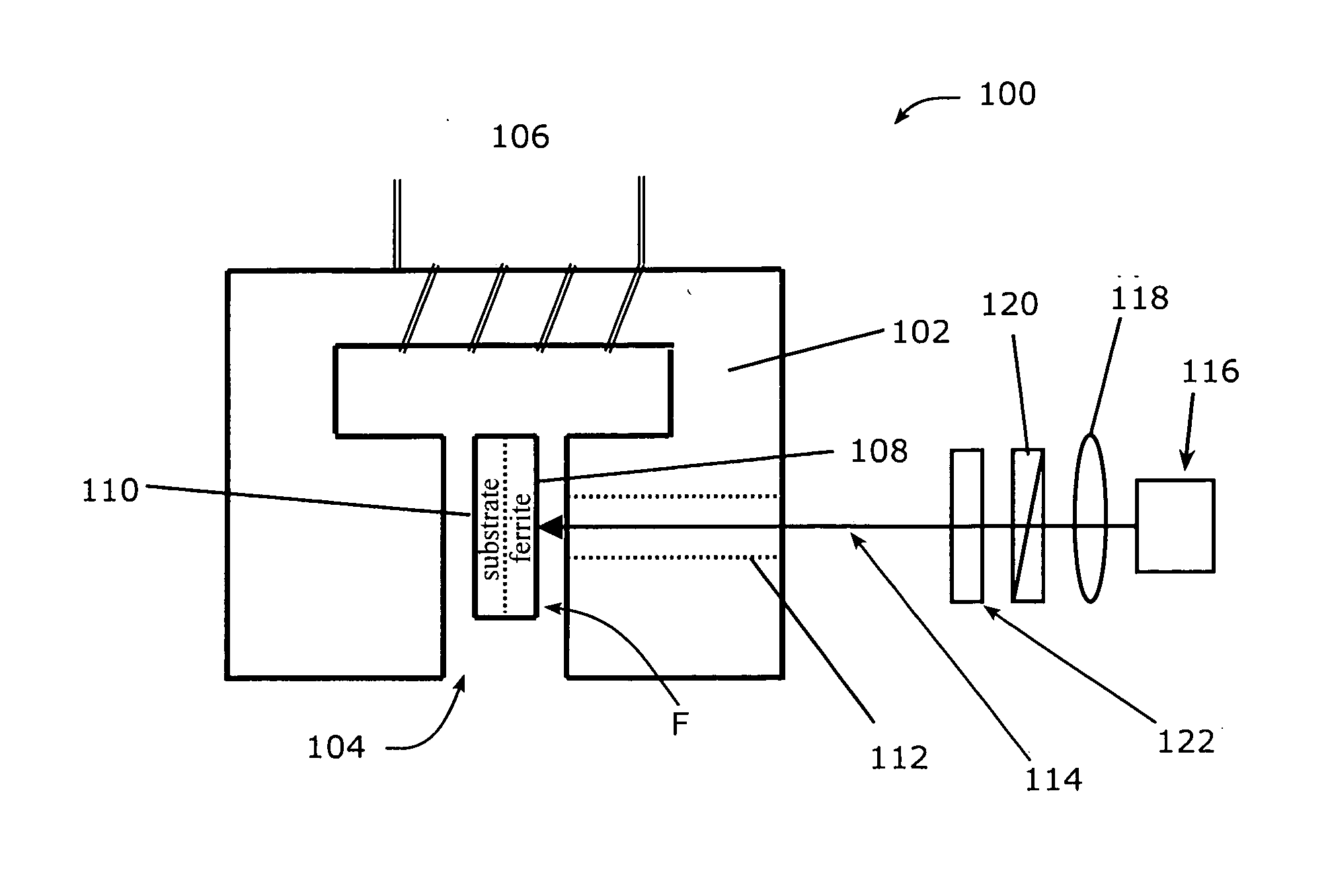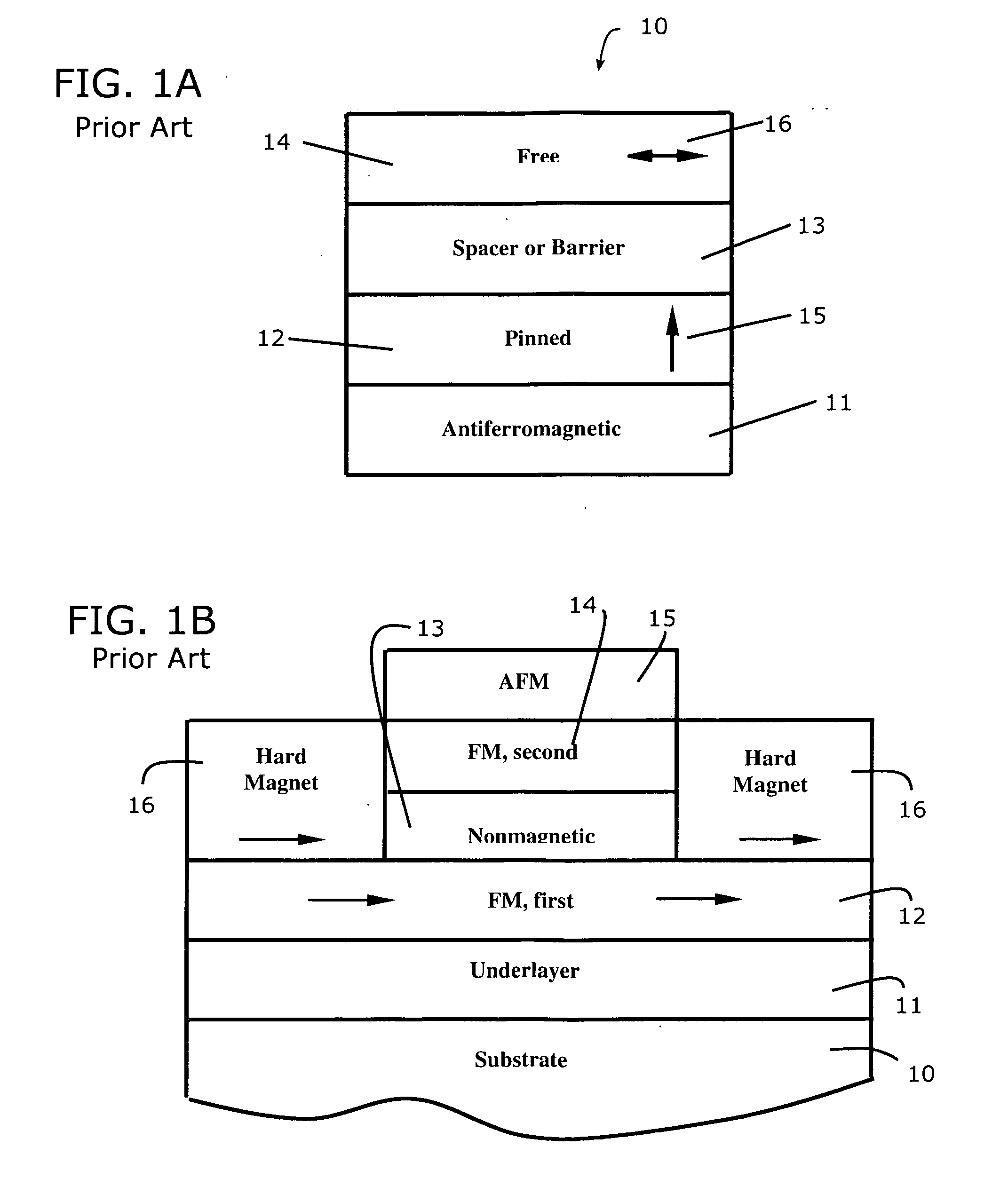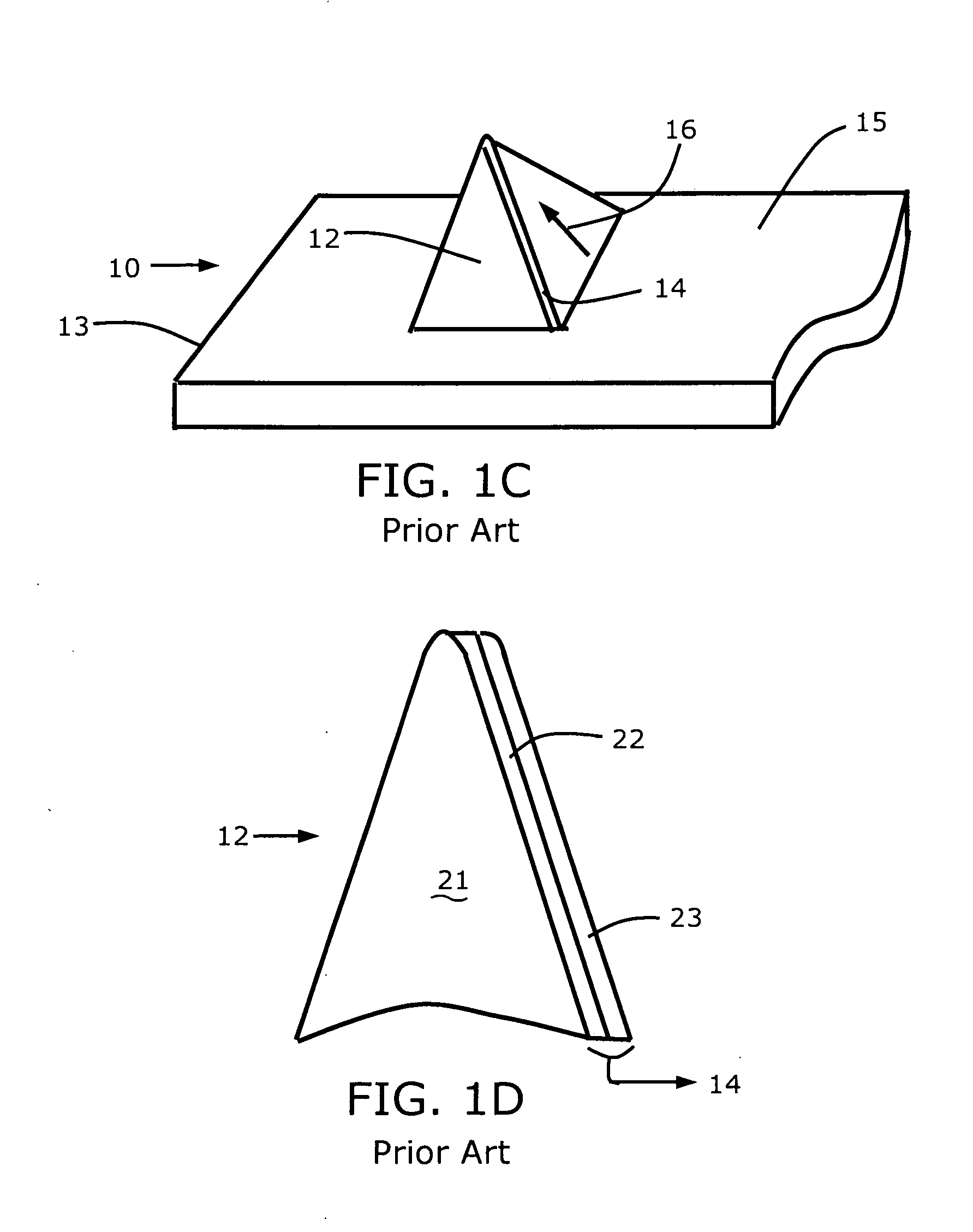Magneto-optical device with an optically induced magnetization
a technology of optical induced magnetization and magnetic transducer, which is applied in the field of magnetic transducer, can solve the problems of unidirectional anisotropy, excessive labor, and complex labor-consuming procedures
- Summary
- Abstract
- Description
- Claims
- Application Information
AI Technical Summary
Benefits of technology
Problems solved by technology
Method used
Image
Examples
first embodiment
[0097]A first embodiment is shown in FIG. 3 and is generally designated therein by the reference numeral 100 and illustrates a method for producing a magneto-optical element with an optically induced magnetization or the magneto-optical device (MOD) with a unidirectional anisotropy at room temperature as well as a scheme of illumination at a magnetic field.
[0098]A system comprises an electromagnet, the MOD, and a system for illumination. The electromagnet contains a soft ferromagnetic yoke 102 with two poles, a gap 104 between the poles, and a conductor 106 wrapped around the yoke 102 as a coil or winding structure. An electrical current passing through conductor 106 creates a magnetic field H about of 3 kOe. The MOD comprises a Mg—Mn—Co— ferrite film 108 deposited on a MgO substrate 110. The MOD is located in the gap 104 between the poles, with the ferrite film 108 parallel to pole surfaces. The ferrite film 108 is illuminated through an opening 112 in one of the poles of the yoke ...
second embodiment
[0129]A second embodiment is shown in FIG. 4 and is generally designated therein by the reference numeral 200. As shown, the magneto-optical device 200 with the optically induced magnetization in the ferrimagnetic ferrite film can be used as a biasing or pinning magnetization (of FM layers) element in magnetoresistive read heads and in a tip of a needle of the magnetic force microscope (MFM) using the optically induced magnetization (OIM), which is stable to a conventional ac demagnetization and has an indefinitely long relaxation time.
[0130]FIG. 4 shows a simplified scheme of the magneto-resistive sensor, which is improved by using the magneto-optical device (MOD) in accordance with the second embodiment. The MOD can replace elements pinning magnetization of FM layers, for example, in a conventional MR sensor, shown in FIG. 1B (also described by Dieny et al. in U.S. Pat. No. 5,206,590 and shown in FIG. 5 herein). In FIG. 1B, the MOD can replace antiferromagnetic layer 15 (which for...
third embodiment
[0142]A method and system for magneto-optical recording using the MOD as a memory cell is presented in a third embodiment.
[0143]FIG. 6 shows a simplified scheme of a magneto-optical recording system designed in accordance with the third embodiment and is generally designated therein by the reference numeral 300. As shown, the system comprises a soft FM yoke 302 with two poles, the MOD, which is used as a recording medium with a patterned Mg—Mn—Co-ferrite film 304 deposited on the MgO substrate 306, which can be part of a disk structure. As the disk with the recording medium moves through a gap 308, a portion of the surface F of the ferrite film 304 is illuminated through an opening 310 in one of the poles (unnumbered) of the yoke 302. A conductor 312 is wrapped around the yoke 302 to form a coil or winding structure. A current, passing through conductor 312, creates the magnetic field H about of 3 kOe. A laser beam 314 from a laser diode 316 (for example, with a wave length of 632.8...
PUM
| Property | Measurement | Unit |
|---|---|---|
| superparamagnetic size | aaaaa | aaaaa |
| magnetization | aaaaa | aaaaa |
| relaxation time | aaaaa | aaaaa |
Abstract
Description
Claims
Application Information
 Login to View More
Login to View More - R&D
- Intellectual Property
- Life Sciences
- Materials
- Tech Scout
- Unparalleled Data Quality
- Higher Quality Content
- 60% Fewer Hallucinations
Browse by: Latest US Patents, China's latest patents, Technical Efficacy Thesaurus, Application Domain, Technology Topic, Popular Technical Reports.
© 2025 PatSnap. All rights reserved.Legal|Privacy policy|Modern Slavery Act Transparency Statement|Sitemap|About US| Contact US: help@patsnap.com



